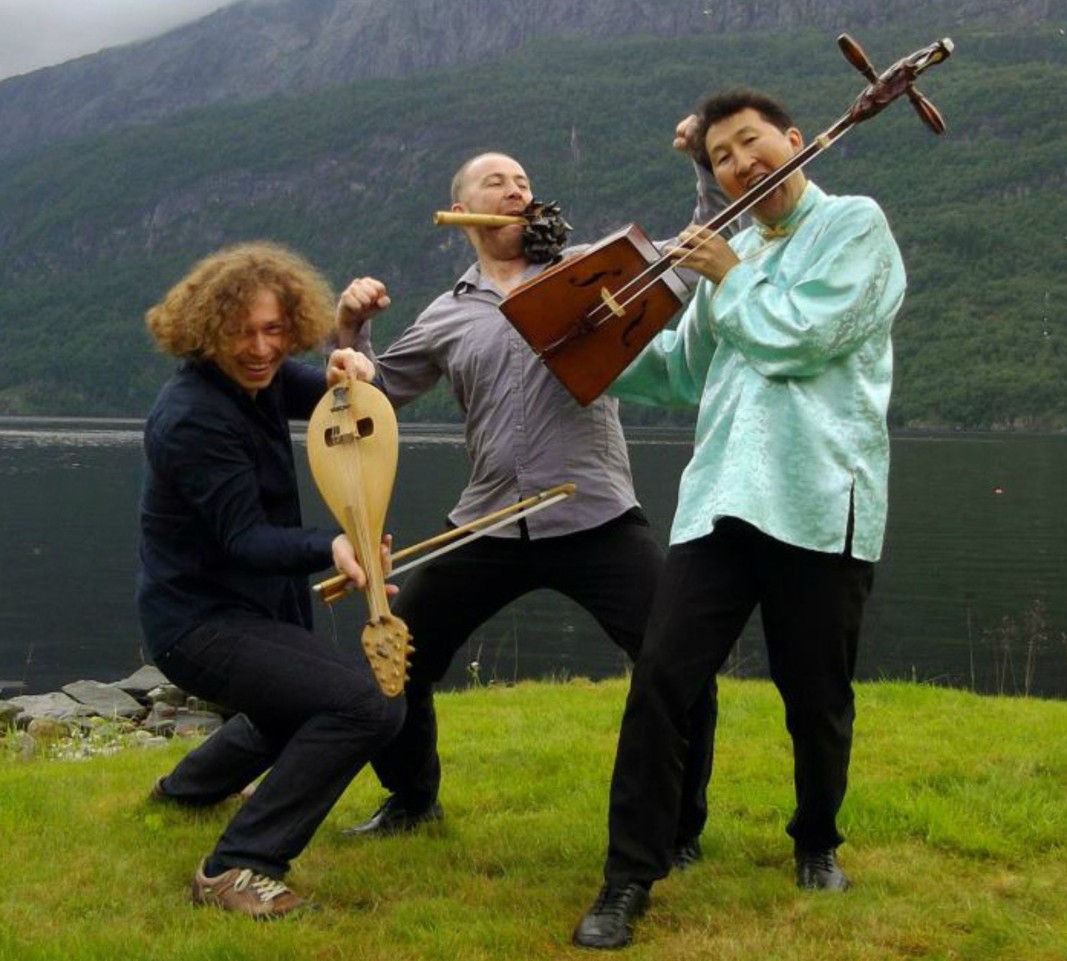The gadulka is not the most popular instrument chosen by performers for appearances on world stages. Playing the gadulka in a modern way, with a repertoire in various genres and styles, is certainly not a task for amateurs. It takes hard work, dedication and a high level of professionalism to master this instrument. Only after all this can the gadulka open up the world for you. This is exactly what happened at the beginning of Dimitar Gugov's career. After nearly 25 years dedicated to the gadulka in France, the virtuoso gadulka player is now embarking on a European tour—with concerts as a solo performer, but also together with his group "Violons Barbares’’. They were invited to give concerts in Austria, Germany, Poland and various cities in France. Before his concert on May 25 in Liège (Belgium), Dimitar Gugov visited the Bulgarian National Radio Folk Orchestra, conducted by Dimitar Hristov.

This is his first return to Bulgaria as a soloist. The concert is on May 23 in Studio 1 of the Bulgarian National Radio. The program includes two original pieces by the renowned gadulka player that will be presented together with the the Bulgarian National Radio Folk Orchestra.
''The decision to choose this musical instrument has little to do with the city I come from — I am from Silistra, Northeastern Bulgaria", Dimitar Gugov said in an interview for Radio Bulgaria:
"The small gadulka called ''kopanka'' is played in Silistra and the the region of Dobrudzha. The large Thracian gadulka, which is part of the orchestras, is a relatively new instrument for my region. However, with the development of folk orchestras after the 1930s, it made its way there as well. Now I realize that the gadulka can be a very difficult instrument. It belongs to the family of bowed string instruments, i.e., the family of violins. But there is something very strange about the gadulka—it has about 10-11 strings that are not played.They are called sympathetic (resonating) strings. The gadulka has a total of 14 strings. There are three playing stings, while the remaining 11 are not touched either by the bow or by the hand—these small strings are there to create an effect that resembles an echo. Apart from the fact that the gadulka is a quite difficult instrument requiring many hours to produce a satisfactory sound, we can find many means of expression and incorporate the gadulka into various repertoires.

Dimitar Gugov comes to Sofia at the invitation of Hristiyan Nedelchev, producer of "Folk Music" at the Bulgarian National Radio. He has been following and presenting the gadulka player's performances on world stages for years, and now the time has come to invite him as a guest in the concert "Music in Portraits“.
''I'm going to play two pieces written by me. One is a solo piece dedicated to my daughter Elen, but for the first time I will perform it with an arrangement by Georgi Andreev and to the rendition of the Bulgarian National Radio Folk Orchestra.The second piece is entitled ‘’Cast Out The Demon’’. It is inspired by the Kalushari and Rusalii dances—nothing different from a ceremony for casting a demon out of a person's body. This is a real exorcist ceremony where dancers form a circle around the sick person. They start to rotate around him very slowly, accompanied sometimes by gadulka music. It starts slowly, gets faster, until finally the dancers spin very fast around the sick person. This takes a lot of time and often seems like it can last for hours. Finally, the dance ends suddenly, and then the sick person gets up and leaves the room, which is a sign that he has been freed from the demon," explains Dimitar Gugov. However, music is a universal language and one doesn't need to understand much to enjoy this performance.
The most inspiring part of Dimitar Gugov's work are the concerts with the trio ‘’Violons Barbares (Barbaric Violins), considered one of the most famous ethnic groups in Europe. It was founded by the Bulgarian gadulka player. The lineup also includes Enkhjargal Dandarvaanchig (Mongolia) who sings and plays the horsehead fiddle (morin khuur), and the French percussionist Fabien Guyot:

My group is called ''Barbaric Violins'', because both Bulgarians and Mongolians were labeled as barbarians by the Greeks, and we are ‘’violins’’, because we play string instruments. There is a paradox in the name that arouses the curiosity of the public, because the violin can never be barbaric as it is a refined instrument made for the Italian aristocracy. There are two bowed string instruments in our group. There are also percussions and various types of singing. When we started our first rehearsals, we said we were going to play rock. It worked out pretty well because since we formed the group, we've been invited to all kinds of festivals- folk festivals, classical music festivals, ethnic music festivals and rock festivals. We've even been invited to metal festivals in Europe."
Published and translated by Kostadin Atanasov
Photos: BTA, BNR, personal archive, Kamen Minkov
More from Radio Bulgaria's series on Highlights of Bulgarian musical culture: Highlights of Bulgarian musical culture: Filip Kutev – "Polegnala e Todora" Highlights of Bulgarian musical culture: Petko Staynov's Thracian Dances..
Today marks the 95th anniversary of the birth of folk singer and accordionist Kroum Yankov. Born on September 11, 1930, in the Rhodope village of Dobralak, the performer showed an interest in the accordion from an early age. His tours through..
While recording new songs, DARA is also revisiting some of her previous music hits. Eight years after its release, one of the singer’s iconic tracks "Nedei" has returned in a modern club version. In this remix, Kamen & Rusto transform the familiar..

+359 2 9336 661
